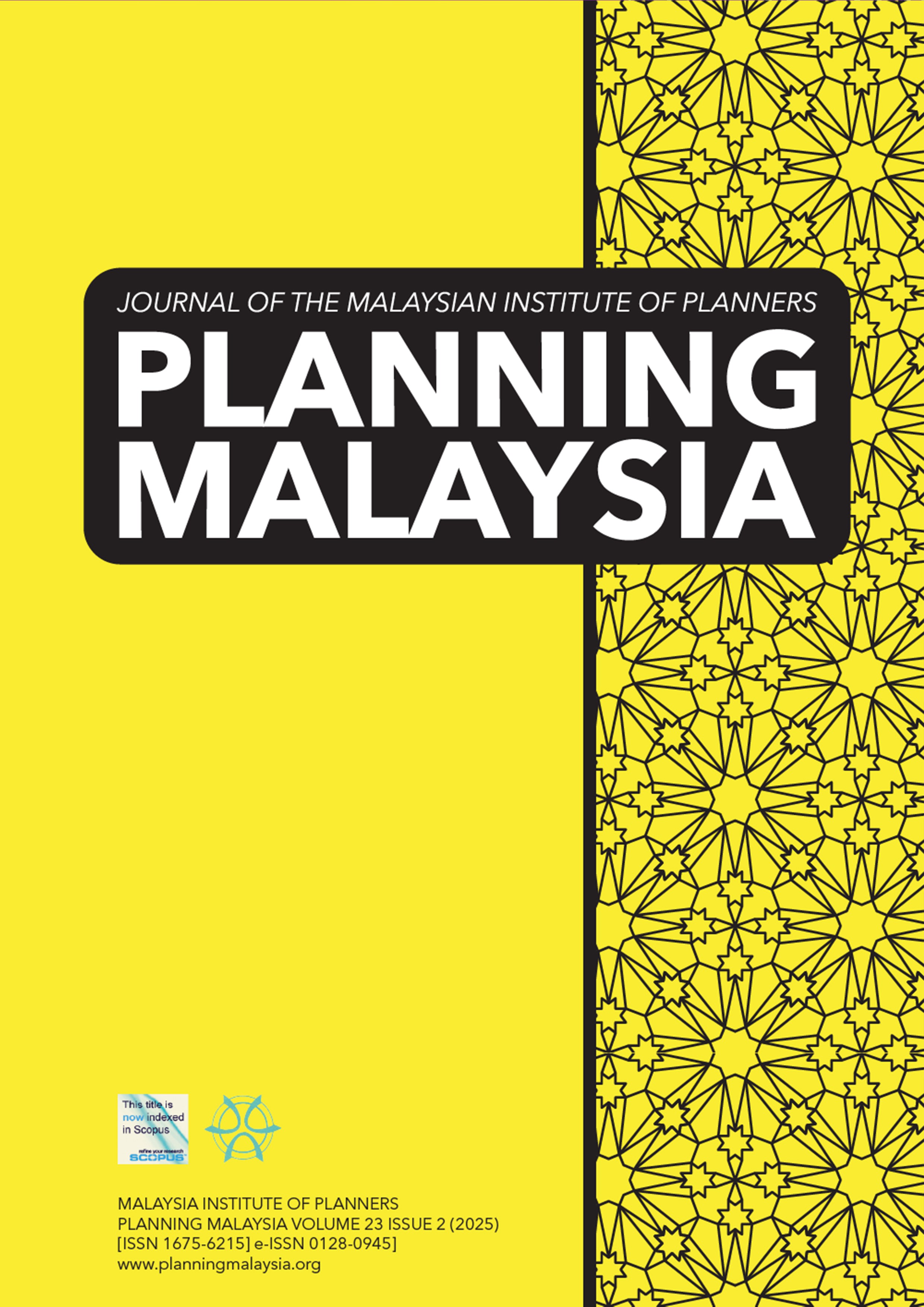EVALUATING AND ENHANCING SUSTAINABLE LIVELIHOODS OF URBAN IMPOVERISHED GROUPS IN KUALA LUMPUR, MALAYSIA
DOI:
https://doi.org/10.21837/pm.v23i36.1699Keywords:
Sustainable livelihoods, urban impoverished groups, Kuala LumpurAbstract
The sustainable livelihoods of urban impoverished groups in Kuala Lumpur have emerged as a critical emphasis due to the ongoing challenge of urban poverty faced by cities worldwide. Accelerated urbanization has exacerbated the socioeconomic divide, resulting in numerous urban impoverished individuals grappling with challenges related to housing, work, and access to essential services. To tackle these difficulties, sustainable strategies, such as community-driven initiatives and partnerships with local authorities, are essential for empowering citizens and equipping them to endure economic disruptions. This study assesses and improves the sustainable livelihoods of impoverished urban neighbourhoods in Kuala Lumpur. The study, grounded in the Sustainable Livelihood Framework (SLF), involved a survey of 394 participants, with data gathered via questionnaires and analyzed using Statistical Package for the Social Sciences (SPSS) version 25 and Microsoft Excel. The results demonstrate that governmental actions substantially contribute to improving the sustainable livelihoods of urban residents in Kuala Lumpur. Mean analysis indicates that impoverished areas in Kuala Lumpur exhibit high well-being only in terms of environmental factors.
Downloads
References
Azmi, A. S. M., & Ramli, M. (2023). Risks during the developer's management period for strata residential property in Malaysia. Planning Malaysia, 21. DOI: https://doi.org/10.21837/pm.v21i26.1279
DFID. (1999). Sustainable livelihoods guidance sheets. London: Department for International Development.
Hahn, M. B., Riederer, A. M., & Foster, S. O. (2009). The livelihood vulnerability index: A pragmatic approach to assessing risks from climate variability and change. A case study in Mozambique. Global Environmental Change, 19(1), 74-88. DOI: https://doi.org/10.1016/j.gloenvcha.2008.11.002
Hardoy Jorge, E., & David, S. (1986). A survey of empirical material on the factors affecting the development of small and intermediate urban centres. In J. E. Hardoy & D. Satterthwaite (Eds.), Small and intermediate urban centres (pp. 279–328). Westview Press. DOI: https://doi.org/10.4324/9780429306112-7
Hassan, N., et al. (2021). Challenges and opportunities of urban poor in Kuala Lumpur. Journal of Urban Studies.
Ismail, M. K., Siwar, C., Ghazali, R., Ab Rani, N. Z. A., & Abdul Talib, B. (2019). The analysis of vulnerability faced by Gahai Agropolitan participants. Planning Malaysia, 17(10). DOI: https://doi.org/10.21837/pmjournal.v17.i10.645
Ismail, M. K., Zailani, S. H. M., Sabarudin, N. A., Ghazali, R., & Siwar, C. (2025). Agropolitan planning as a strategy for promoting sustainable living among rural poor communities: Empirical evidence. Planning Malaysia, 23. DOI: https://doi.org/10.21837/pm.v23i35.1660
Kamal, E. M., Lai, K. S., & Yusof, N. A. (2020). The low-middle income housing challenges in Malaysia. Planning Malaysia, 18. DOI: https://doi.org/10.21837/pm.v18i11.713
Krejcie, R. V., & Morgan, D. W. (1970). Determining sample size for research activities. Educational and Psychological Measurement, 30(3), 607-610. DOI: https://doi.org/10.1177/001316447003000308
Mokhtar, R., & Rahman, A. (2022). Community resilience and sustainable development in urban Malaysia. Malaysian Journal of Development Studies.
Patton, M. Q. (2015). Qualitative research and evaluation methods. Sage Publications.
Shah, J. M., Hussin, R., & Idris, A. (2023). Poverty eradication project in Sabah, Malaysia: New initiative, new challenges? Planning Malaysia, 21. DOI: https://doi.org/10.21837/pm.v21i30.1415
Sohaimi, N. S., Abdullah, A., & Shuid, S. (2018). Determining housing affordability for young professionals in Klang Valley, Malaysia: Residual income approach. Planning Malaysia, 16. DOI: https://doi.org/10.21837/pm.v16i6.464
Sullivan, C. (2002). Calculating a water poverty index. World Development, 30(7), 1195-1210. DOI: https://doi.org/10.1016/S0305-750X(02)00035-9
UN-Habitat. (2020). Supporting sustainable and resilient urban growth. UN-Habitat.
United Nations. (2019). Sustainable cities and communities: The role of urban planning in poverty alleviation. UN Publications.
World Bank. (2020). Building resilience in urban communities: A global report on cities and poverty. World Bank.
Downloads
Published
How to Cite
Issue
Section
License

This work is licensed under a Creative Commons Attribution-NonCommercial-NoDerivatives 3.0 Unported License.
Copyright & Creative Commons Licence
eISSN: 0128-0945 © Year. The Authors. Published for Malaysia Institute of Planners. This is an open-access article under the CC BY-NC-ND license.
The authors hold the copyright without restrictions and also retain publishing rights without restrictions.


